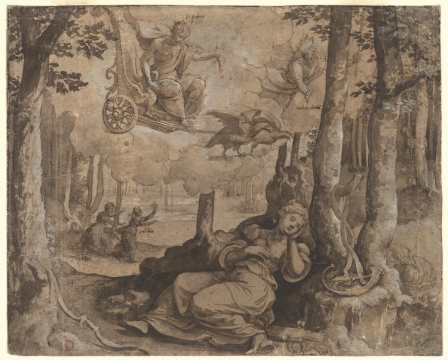Anonymous (circle of Bernard van Orley and Pieter Coecke van Aelst)
Type:
Drawing
Material / technique:
Pen and brown ink, brush and brown as well as greyish-brown ink over a preliminary sketch in black stone (watercolour black chalk) on light brown paper
Dimensions:
242 x 330 mm
Type of acquisition:
Acquired by Léon Courtin - Marcelle Bouché Fund
Year of acquisition:
2016
Depository institution:
Royal Museums of Fine Arts of Belgium, Brussels
